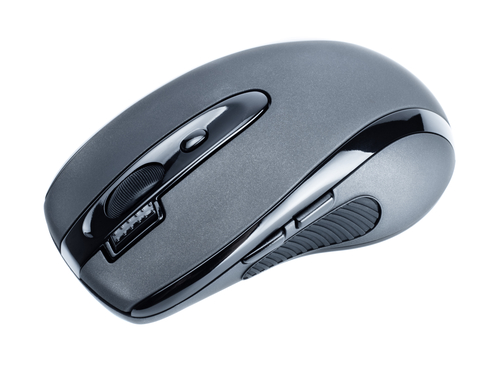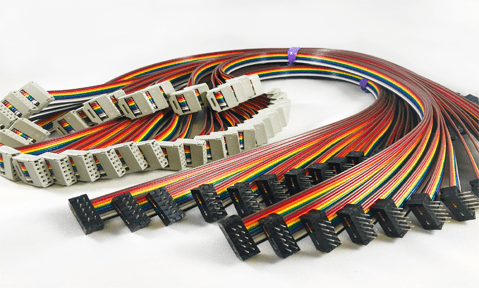One of the most essential input devices in contemporary computing, the computer mouse is essential to user interaction with computers. From its basic beginnings, it has developed into an advanced tool that gives users exact control over their computing environment. This article highlights the significance of computer mice in daily computing operations by examining their types, history, functioning, ergonomic issues, and future trends.
1. A Brief History of the Mouse

a. Inaugural Steps
The first prototype of the computer mouse was created in the 1960s at the Stanford Research Institute by engineer and inventor Douglas Engelbart. Two metal wheels mounted on a wooden shell detected movement on a surface according to Engelbart’s idea. The goal of this ground-breaking creation was to increase productivity and improve human-computer connection.
c. The Mouse’s Evolution
Though these were basic gadgets, the early mice helped to develop more sophisticated models. Xerox PARC improved the mouse in the 1970s by adding a third button for further functionality and a more ergonomic design. Subsequent models that would become the norm in personal computing were influenced by this iteration.
With the introduction of the Macintosh in the 1980s, Apple popularized the mouse, which resulted in its extensive use in the consumer market. Mice continued to develop in the 1990s and 2000s, gaining new features and technology like optical sensors and wireless communication.
2. Types of Computer Mice

6. Conclusion
a. Mechanical Mouse
The mechanical mouse represents one of the earliest forms of computer mice. It operates using a ball that rolls across a surface, with sensors that detect the ball’s movement and convert it into cursor motion on the display.
1. Advantages of Mechanical Mice
Simplicity: The design of mechanical mice is uncomplicated, making them user-friendly.
Cost-Effectiveness: They are typically more affordable than more advanced technologies.
2. Disadvantages of Mechanical Mice
Maintenance: The ball can accumulate dirt and debris, necessitating regular cleaning to ensure optimal performance.
Limited Precision: Mechanical mice do not provide the same level of accuracy as contemporary optical and laser mice.
b. Optical Mouse
The optical mouse utilizes a light-emitting diode (LED) to sense movement across a surface. It captures images of the surface and employs these images to monitor movement.
1. Advantages of Optical Mice
No Moving Parts: The lack of a ball results in reduced maintenance and fewer components that may fail.
Precision: Optical mice deliver enhanced accuracy and responsiveness in comparison to mechanical mice.
2. Disadvantages of Optical Mice
Surface Sensitivity: Optical mice may encounter difficulties on glossy or reflective surfaces, often requiring a mouse pad for optimal functionality.
Battery Dependency: Wireless optical mice rely on batteries, which may deplete during use.
c. Laser Mouse
Laser mice utilize a laser sensor for movement detection, offering superior precision and the capability to function on a broader range of surfaces than optical mice.
1. Advantages of Laser Mice
Higher Sensitivity: Laser sensors provide enhanced accuracy and can track on various surfaces, including glass.
Longer Range: They generally perform well at greater distances from the surface.
2. Disadvantages of Laser Mice
Cost: Laser mice are usually more expensive than their optical counterparts.
Over-sensitivity: The heightened sensitivity can occasionally result in unintended cursor movement.
d. Wireless Mouse
Wireless mice utilize radio frequency (RF) or Bluetooth technology to connect to computers, eliminating the necessity of a cable. This advancement allows for enhanced mobility and contributes to a tidier workspace.
1. Advantages of Wireless Mice
Portability: Wireless mice are generally lighter and more convenient to carry.
Freedom of Movement: Users enjoy the ability to move without being restricted by a cable.
2. Disadvantages of Wireless Mice
Battery Life: The requirement for batteries or recharging can be a drawback.
Lag: Although less common with contemporary technology, some wireless mice may still experience lag or connectivity problems.
e. Gaming Mouse
Gaming mice are tailored for gamers, incorporating customizable buttons, high precision, and ergonomic designs to support prolonged gaming sessions.
1. Advantages of Gaming Mice
Customization: Numerous gaming mice offer the ability to program buttons for specific functions or macros.
High DPI Settings: These mice frequently feature adjustable DPI (dots per inch) settings, enhancing sensitivity and precision.
2. Disadvantages of Gaming Mice
Cost: The advanced features of gaming mice often result in a higher price point.
Bulkiness: Certain gaming mice may be larger and heavier, which might not be ideal for all users.
f. Ergonomic Mouse
Ergonomic mice are crafted to conform to the natural shape of the hand, minimizing strain during extended usage. They may include vertical designs or specialized grips.
1. Advantages of Ergonomic Mice
Comfort: Ergonomic designs significantly reduce wrist and hand fatigue, making them appropriate for prolonged use.
Health Benefits: They can aid in preventing repetitive strain injuries (RSIs) linked to extended computer use.
2. Disadvantages of Ergonomic Mice
Adjustment Period: Users may require time to acclimate to the unique shape and design.
Cost: Ergonomic mice often come at a higher price compared to standard models.
3. How Mice Work
1. Sensors and Tracking Technologies
The tracking technology of a mouse is essential for its functionality. There are two main categories of sensors utilized in mice:
1. Optical Sensors
Optical mice employ an LED light to illuminate the surface beneath them. The sensor captures images of this surface and detects movement by analyzing the differences between these images. Optical sensors perform optimally on non-reflective surfaces.
2. Laser Sensors
Laser mice use a laser beam to sense movement. This technology enables them to function effectively on a broader range of surfaces, including glossy or transparent materials. The enhanced resolution of laser sensors provides greater accuracy compared to optical sensors.
b. Button Functionality
Most mice are equipped with several buttons, including the left and right buttons as well as a scroll wheel. Each button can be customized for specific tasks, enhancing control and efficiency during operation.
Left Button: Commonly used for selecting items and executing commands.
Right Button: Typically offers additional options or context menus.
Scroll Wheel: Facilitates vertical scrolling through documents and web pages. Many scroll wheels also serve as buttons for extra commands.
c. Connectivity
Mice can connect to computers through various means:
1. Wired Connection
Wired mice connect via USB cables, ensuring a stable and dependable connection. They usually exhibit lower latency than their wireless counterparts, making them favored by gamers and professionals.
2. Wireless Connection
Wireless mice connect through Bluetooth or RF technology. They provide increased flexibility, allowing users to move freely without being connected to their computers. However, they do require batteries, which can be a disadvantage.
4. Ergonomics and User Comfort
1. Significance of Ergonomics
As individuals increasingly engage with computers, the significance of ergonomic principles becomes more pronounced. Extended usage of inadequately designed mice can result in discomfort and repetitive strain injuries (RSIs).
2. Characteristics of Ergonomic Mice
Natural Contour: Ergonomic mice are crafted to align with the natural shape of the hand, thereby minimizing wrist strain.
Customizable Features: Certain ergonomic mice offer options for adjusting sensitivity, button layout, and weight, allowing for a tailored experience.
3. Recommendations for Comfortable Mouse Usage
Ensure Proper Posture: Maintain straight wrists and refrain from resting them on hard surfaces.
Utilize a Mouse Pad: A mouse pad equipped with wrist support can enhance comfort during prolonged use.
Incorporate Breaks: Regular breaks for stretching and resting the hands can aid in preventing fatigue.
5. Future Trends in Mouse Technology
a. Technological Advancements
The mouse industry is in a state of constant evolution, with various emerging trends poised to influence the future of mouse design:
1. Intelligent Mice
Intelligent mice incorporate cutting-edge technology, enabling users to personalize settings, monitor usage patterns, and connect with multiple devices. Features such as touch sensitivity and haptic feedback are becoming increasingly prevalent.
2. Gesture-Based Control
With the progression of technology, gesture-based control is gaining traction. Certain mice are capable of recognizing hand movements and gestures, allowing users to execute tasks without the need for conventional clicking.
b. Commitment to Sustainability
In light of growing environmental concerns, manufacturers are placing a greater emphasis on sustainable practices. This encompasses the use of eco-friendly materials, minimizing packaging waste, and developing energy-efficient devices.
c. Innovations in Gaming
The gaming sector continues to drive advancements in mouse technology, introducing new features designed to enhance the gaming experience. This includes customizable RGB lighting, sophisticated sensors for improved precision, and options for wireless charging.
6. Conclusion
The computer mouse serves as a fundamental tool in contemporary computing, offering users precise control and interaction with their devices. It is essential to comprehend the various types of mice, their functionalities, and ergonomic considerations to maximize productivity and comfort. As technology progresses, the mouse will evolve, integrating new features and designs to cater to the demands of users in a dynamic digital environment. Whether utilized for professional tasks, gaming, or daily activities, the computer mouse remains an indispensable element of our technological interactions.






